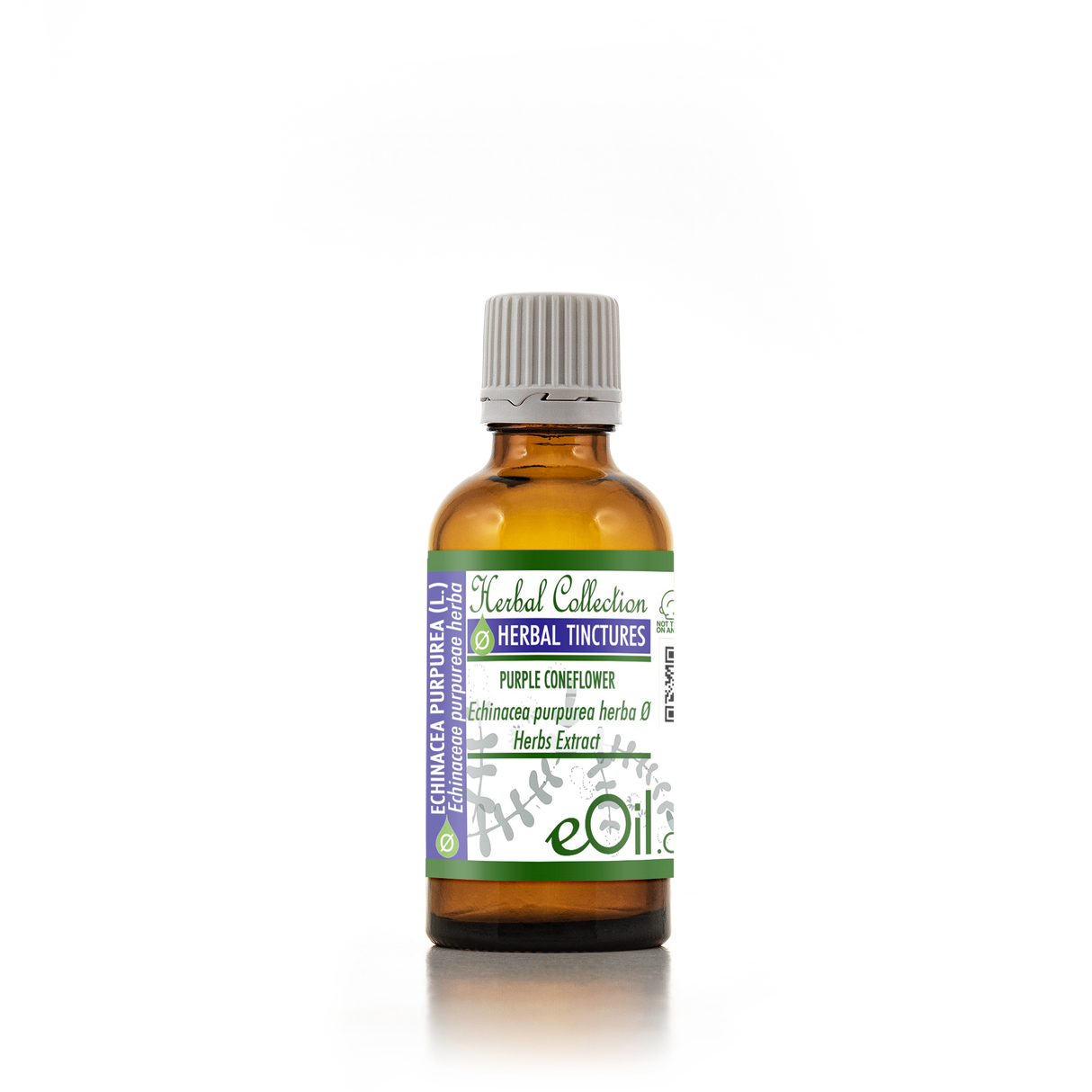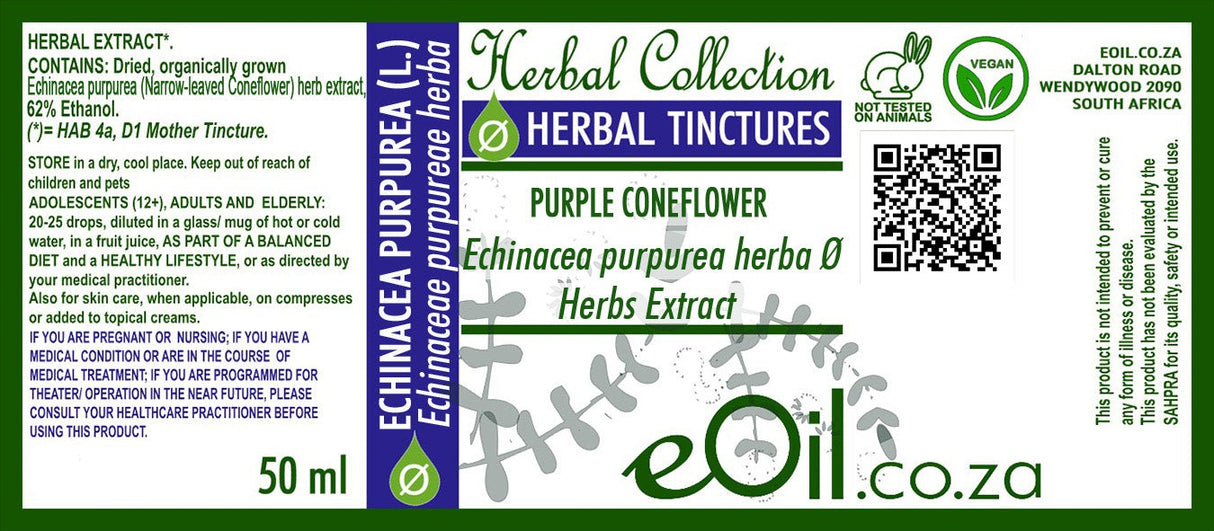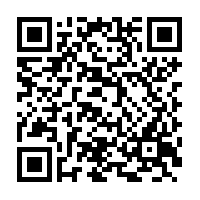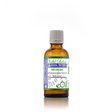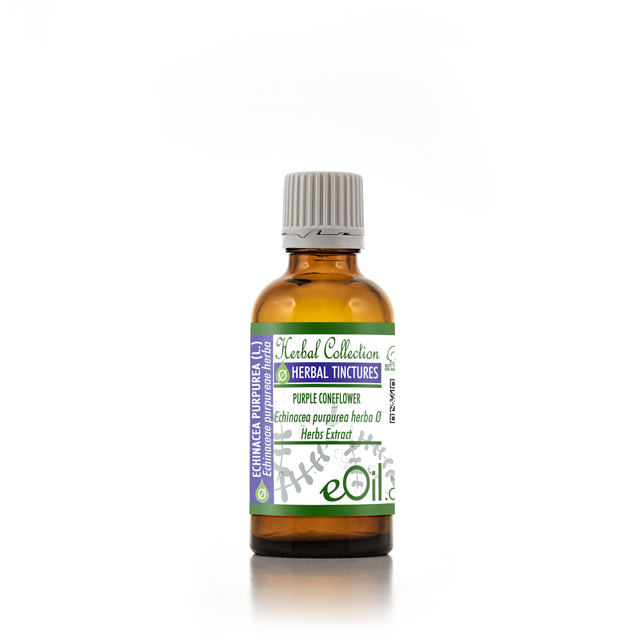Purple Coneflower Liquid Herbal Extract
Purple Coneflower Liquid Herbal Extract - 50 ML is backordered and will ship as soon as it is back in stock.
Description
Description
Understanding Mother Tinctures & Glycerines
Purple Coneflower Liquid Herbal Extract tincture (Echinacea purpurea) is a pure, plant-based tincture valued for supporting immune system wellness and natural vitality.
Rich in antioxidants and traditionally used in herbal medicine, this extract is vegan, additive-free, and ideal for daily wellness routines or herbal teas
TRADITIONALLY USED FOR
Echinacea, also known as the purple coneflower, is a group of flowering plants in the daisy family, native to North America. The most commonly used species for medicinal purposes are Echinacea purpurea, Echinacea angustifolia, and Echinacea pallida.
Echinacea has been traditionally used by Native Americans for centuries, and its therapeutic benefits have been well documented in Western herbal medicine.
Traditional Uses:
- Immune support: Echinacea is perhaps best known for its immune-boosting properties. Traditionally, it has been used to prevent and treat common colds, flu, and other infections.
- Wound healing: Native Americans used Echinacea topically to treat various skin conditions, including wounds, burns, insect bites, and skin infections.
- Anti-inflammatory: Echinacea has been used to relieve inflammation and pain associated with conditions like arthritis, rheumatism, and other musculoskeletal disorders.
- Respiratory support: Echinacea has been used to treat respiratory issues such as bronchitis, sinusitis, and sore throat.
Properties:
- Immunostimulant: Echinacea is believed to stimulate the immune system by increasing the production of white blood cells and enhancing their activity.
- Antiviral and antibacterial: Echinacea contains compounds that may help inhibit the growth of viruses and bacteria, providing protection against various infections.
- Antioxidant: Echinacea is rich in antioxidants that help neutralize free radicals and protect the body against oxidative damage.
- Anti-inflammatory: Echinacea contains compounds that may help reduce inflammation, providing relief from associated pain and discomfort.
Benefits:
- Cold and flu prevention: Research suggests that Echinacea may help prevent and shorten the duration of colds and flu by boosting the immune system.
- Skin health: Echinacea's anti-inflammatory and antimicrobial properties may help promote wound healing, reduce skin irritation, and treat various skin conditions.
- Respiratory support: Echinacea may help alleviate symptoms of respiratory issues like sinusitis, bronchitis, and sore throat.
- General well-being: As a natural immune enhancer, Echinacea may help improve overall health and well-being, especially during times of increased stress or exposure to pathogens.
It's important to note that more research is needed to confirm some of these benefits, and individual results may vary. Always consult with a healthcare professional before using Echinacea or any herbal supplement, especially if you are pregnant, breastfeeding, have allergies, or are taking any medications.
INFORMATION
Source : http://www.wikiphyto.org/wiki/echinacee
Reference on http://www.wikiphyto.org
Translation in English by Google Translate (go to the page of the source linked | on Chrome cellphones go on the 3 dots on the top right and select translate in your preferred language | on laptop right click your mouse and select option translate when hoovering on the page
plant name
Echinacea, Echinacea
- Three species are considered medicinal by the French Pharmacopoeia :
International Latin denomination
- Echinacea angustifolia DC
- Echinacea purpurea (L.) Moench. (= Rudbeckia purpurea L.)
- Echinacea pallida Nutt.
botanical family
Asteraceae
Description and habitat
- North American plant, dry grasslands and hills, dry sandbanks
- The root is fusiform, the leaves entire and lanceolate. The large terminal flower heads are made up of yellow or purple tubular flowers gathered in a ball, and drooping ligulate flowers, usually pink making it look like a daisy (it is a Compositae = Asteraceae )
History and tradition
- The American Indians (South Dakota) used this plant to heal infected wounds, and in local applications in snakebites. To use it, they ground the fresh plant and applied it topically or chewed the root
- Alexitere plant: recommended against snake bites
- The name comes from the Greek echinos hedgehog to recall the appearance of the flower head when fruiting .
- It was the most used plant in the United States in the 19th century.
- Rudbeckia subtomentosa , botanically close, contains like Inula helenium eudesmanolides ( alloalantolactone and 3-oxo-alloalantolactone ) active on Mycobacterium tuberculosis
Parts used
- Root (or whole plant with root)
Dosage forms available
- Echinacea angustifolia tincture whole plant
- Echinacea purpurea root EPS
- Fluid extract
- Favor the fresh plant (preservation of alkylamides and galenic forms which preserve the presence of polysaccharides insoluble in alcohol
Usual dosages
- Fluid extract 1 gram or 50 drops once a day
- Mother tincture 50 drops twice a day
- EPS 5ml per day
- In prevention, always in discontinuous cures, 10 to 15 days per month
- In acute:
- Echinacea purpurea juice 2 to 3 ml or 1 to 2 ml of extract, 1 to 4 times a day, either mixed with water or taken sublingually
- Dry extract (concentration ratio 6.5:1) of Echinacea purpurea 3 times a day 150 to 300 mg
- Alcoholic tincture (1:5, 45% ethanol), 1 to 5 ml 3 times a day
Composition
Main components of the plant
- Alkylamides or alkamides (unsaturated aliphatic compounds: 2%, about fifteen compounds have been identified) in the lipophilic fraction, including echinacein ; they are polyins or isobutylamides of polyenynic and polyene acids (= polyacetylenes)
- Phenolic compounds derived from caffeic acid like echinacoside (0.3 – 1.3%), cynarin or cichoric acid , specific for either species
- Cichoric acid and caftaric acid : Echinacea purpurea
- Echinacoside : upper part of the roots of Echinacea angustifolia and Echinacea pallida )
- Their compositions can change depending on the flowering period [1]
- Complex polysaccharides of M > 10,000 D, including arabinogalactan , arabinorhamnogalactan , fucogalactoxyloglucan , glucuronoarabinoxylan
- Indolizidine alkaloids
- Long chain fatty acids, alkanes
- Essential oil with humulene (= alpha-caryophyllene ) and echinolone
Main components of buds or young shoots
Main components of essential oil
Humulene (= alpha-caryophyllene ) and echinolone
Properties
Plant properties
- The juxtaposition of three large groups of substances: alkylamides , polysaccharides , caffeic acid derivatives seems important for efficacy [2]
- The fresh plant would be more active, the alkylamides are more concentrated in the fresh echinacea extract than in the dried echinacea extract [3]
- The plant acts on several factors of immunity:
- Prevents microbial germs from attacking connective tissue and limits their progression
- Stimulates the activity of macrophages ( arabinogalactan ) [4] and induces their cytotoxicity [5] , modulates the production of cytokines by macrophages [6] , activates NF-kappaB [7] , increases the phagocytosis of granulocytes and macrophages ( alcoholic extracts of the root), inhibits the production of PGE2 by macrophages [8]
- Increases the number of white blood cells and in particular lymphocytes, increases the proliferation of spleen cells, the production of Ig M, induces the formation of cytokines (TNF alpha, interleukin 1 & 6) and that of interferons alpha and beta
- Alkylamides modulate the expression of NF-kappa B by some human T cells (Jurkat T cells) [9] , inhibit the ability of activated Jurkat T cells to produce the interleukin IL-2, independent of direct and cytotoxic effects [10] , but their specific effects of each of them are poorly understood and require standardization [11]
- Echinacein would be adrenal-mimetic, like Ginseng extract , and it increases resistance to effort
- Among the polysaccharides , glucan stimulates phagocytosis, galactan stimulates the production of cytokines by macrophages: TNF-alpha, interferon beta-2, and interleukin-1
- Improves immunity of immunodeficient mice [12]
- Stimulation in vivo in rats of a non-specific immune response (association of cichoric acid , polysaccharides , alkylamides ) [13]
- Direct antibacterial effect on Streptococcus pyogenes , Hemophilus influenzae , Legionella pneumophila , methicillin- resistant Staphylococcus aureus , Mycobacterium smegmatis , and decreased induced inflammatory responses [14]
- Antiviral [15] , [16] , overall virucidal activity against membrane viruses (multi-functional action) [17] , inhibition of virus-induced secretion of pro-inflammatory cytokines (IL-6 and IL -8 (CXCL8)
- Both cichoric acid and echinacoside possess antiviral activity [18]
- Anti- influenza [19]
- Inactivates the coronaviruses HCoV- 229E , MERS-CoV, SARS-CoV-1, SARS-CoV-2 in vitro [20]
- Anti-inflammatory [21]
- Alkylamides are ligands for cannabinoid type 2 receptors, which could explain immune modulating effects through TNF-alpha and interest in inflammatory diseases [22] , [23] , [24]
- Alkylamides are analgesic [ 25]
- Healing action, participates in the restoration of connective tissue by opposing the hydrolysis of hyaluronic acid, the fundamental molecule of connective tissue [26]
Bud properties
Properties of essential oil
Directions
Indications of the whole plant (phytotherapy)
- Prophylaxis and therapy of influenza infections and septic infections, decreases cold symptoms [27] , the Cochrane literature review dating from 2014 shows a weak effect in the treatment of colds, but a constant efficacy in the prevention of recurrences [28] , furthermore with significant differences due to the choice of plant species and organs, and different galenic forms
- Immune stimulation, immuno-stimulant: acts both in prevention (bacterial infections, flu, herpes, cystitis, candidiasis, etc.) and curative where it potentiates other therapies [29]
- Local treatment of delayed healing and dermatitis
- Preferably fresh plant juice due to the presence of alcohol-insoluble polysaccharides
- Homeopathic indications:
- Septicemia or suppuration with impaired general condition, torpor, deep pain, dehydration, and anthrax, furunculosis, adenitis, lymphangitis, phlegmons, gangrene
Indications of the bud (gemmotherapy)
Specific indications of essential oil (aromatherapy)
Known or suspected mode of action
- Echinacein would be adrenal-mimetic
- Complex immunomodulatory activities, stimulation of phagocytic activity of macrophages and suppression of pro-inflammatory responses of epithelial cells to viruses and bacteria, which lead to alterations in the secretion of various cytokines and chemokines [32]
- The immuno-stimulating activity is due in particular to the polysaccharides , but the lipophilic fraction ( alkylamides ) is also active, in particular on macrophages.
- Alkylamides inhibit the production of prostaglandin E2 (PGE(2) by macrophages [33] , [34] ) , they participate in the immunostimulant effect [35] and are anti-inflammatory [36]
- Alcoholic root extracts increase granulocyte phagocytosis
- Polyacetylenic derivatives are chemotaxonomic characters of the family Asteraceae
Usual formulations
Regulations
- French Pharmacopoeia list A:
- Underground part of narrow-leaved coneflower ( Echinacea angustifolia )
- Flowering aerial part and underground part of purple coneflower Echinacea purpurea
- Underground part of pale coneflower ( Echinacea pallida )
- Activity recognized by the German Commission E ( Echinacea purpurea )
Possible side effects and precautions for use
- Contraindications: autoimmune diseases, and progressive diseases such as tuberculosis, leucosis, collagenosis, MS, AIDS
- Avoid during pregnancy [37]
- Allergic risks to Asteraceae , caution in atopics [38] , reported hypereosinophilia [39]
- Leukopenia reported in prolonged use [40]
- A few rare cases of hepatitis reported [41] , including one with positive anti-smooth muscle antibodies [42]
- Pharmacokinetic interactions:
- Possible interaction with CYP450 enzymes [11] (isoenzyme inhibition, increased drug effect, but no in vivo clinical evidence )
- No interaction noted with cytochrome CYP2D6 [43]
- Inhibition of cytochrome P450 isoforms 3A4, 1A2, 2C19, 2D9 ( alkylamides ) [44]
- Controversial contraindications by one author [45] , [46] , another author mentions that contraindications in cases of autoimmune diseases and immunosuppression are questionable, use during pregnancy is accepted, qu there is no significant inhibition of CYP2D6 and CYP3A4 in vivo, that the contradictory results concern the use of liver microsomes, and that, ultimately , echinacea preparations are well tolerated in the management of children and adults [47]
- Pharmacodynamic interactions, avoid the following combinations:
- Steroids (additive immunomodulatory properties)
- Immunosuppressants (theoretical impairment of immunosuppressive effect)
- In AIDS, no problems were noted after co-administration of Echinacea purpurea with darunavir-ritonavir [48]
- No problems were noted in the combination of Echinacea purpurea with docetaxel [49]
- A case of recurrent erythema nodosum has been reported in a patient who consumed loratadine and echinacea together [50].
Bibliographic references
- Go↑ Letchamo, W., J. Livesey, TJ Arnason, C. Bergeron, and VS Krutilina. 1999. Cichoric acid and isobutylamide content in Echinacea purpurea as influenced by flower developmental stages. p. 494–498. In: J. Janick (ed.), Perspectives on new crops and new uses. ASHS Press, Alexandria, VA.
- Go↑ Manayi, A., Vazirian, M., & Saeidnia, S. (2015). Echinacea purpurea: Pharmacology, phytochemistry and analysis methods. Pharmacognosy Reviews, 9(17), 63–72. http://doi.org/10.4103/0973-7847.156353
- Go↑ Tobler M, Krienbühl H, Egger M, et al. Characteristics of whole fresh plant extracts. Phytotherapy. Switzerland. Zschr. Ganzheits Medizin. 1994
- Go↑ Luettig B, Steinmüller C, Gifford GE, Wagner H, Lohmann-Matthes ML. Macrophage activation by the polysaccharide arabinogalactan isolated from plant cell cultures of Echinacea purpurea. J Natl Cancer Inst. 1989 May 3;81(9):669-75. PMID 2785214
- Go↑ Stimpel M, Proksch A, Wagner H, Lohmann-Matthes ML. Macrophage activation and induction of macrophage cytotoxicity by purified polysaccharide fractions from the plant Echinacea purpurea. Infect Immun. 1984 Dec;46(3):845-9. PMID 6389368
- Go↑ Todd DA, Gulledge TV, Britton ER, Oberhofer M, Leyte-Lugo M, Moody AN, Shymanovich T, Grubbs LF, Juzumaite M, Graf TN, Oberlies NH, Faeth SH, Laster SM, Cech NB. Ethanolic Echinacea purpurea Extracts Contain a Mixture of Cytokine-Suppressive and Cytokine-Inducing Compounds, Including Some That Originate from Endophytic Bacteria. PLoS One. 2015 May 1;10(5):e0124276. doi: 10.1371/journal.pone.0124276. eCollection 2015. PMID 25933416 full text
- Go↑ Sullivan AM, Laba JG, Moore JA, Lee TD. Echinacea-induced macrophage activation. Immunopharmacol Immunotoxicol. 2008;30(3):553-74. doi: 10.1080/08923970802135534. PMID 18618312
- Go↑ LaLone CA, Hammer KDP, Wu L, et al. Echinacea Species and Alkamides Inhibit Prostaglandin E2 Production in RAW264.7 Mouse Macrophage Cells. Journal of agricultural and food chemistry. 2007;55(18):7314-7322. doi:10.1021/jf063711a. Full Text
- Go↑ Matthias A, Banbury L, Bone KM, Leach DN, Lehmann RP. Echinacea alkylamides modulate induced immune responses in T-cells. Fitoterapia. 2008 Jan;79(1):53-8. PMID 17855021
- Go↑ Sasagawa M, Cech NB, Gray DE, Elmer GW, Wenner CA. Echinacea alkylamides inhibit interleukin-2 production by Jurkat T cells. Int Immunopharmacol. 2006 Jul;6(7):1214-21. PMID 16714226
- ↑Go to :11.0 and 11.1 Toselli F, Matthias A, Gillam EM. Echinacea metabolism and drug interactions: the case for standardization of a complementary medicine. Life Sci. 2009 Jul 17;85(3-4):97-106. doi: 10.1016/j.lfs.2009.04.023. PMID 19427870
- Go↑ Steinmüller C, Roesler J, Gröttrup E, Franke G, Wagner H, Lohmann-Matthes ML. Polysaccharides isolated from plant cell cultures of Echinacea purpurea enhance the resistance of immunosuppressed mice against systemic infections with Candida albicans and Listeria monocytogenes. Int J Immunopharmacol. 1993 Jul;15(5):605-14. PMID 8375943
- Go↑ Goel V, Chang C, Slama J, Barton R, Bauer R, Gahler R, Basu T. Echinacea stimulates macrophage function in the lung and spleen of normal rats. J Nutr Biochem. 2002 Aug;13(8):487. PMID 12165361
- Go↑ Sharma SM, Anderson M., Schoop SR, Hudson JB Bactericidal and anti-inflammatory properties of a standardized Echinacea extract (Echinaforce®): Dual actions against respiratory bacteria. Phytomedicine 17 (2010) 563–568
- Go↑ Birt DF, Widrlechner MP, Lalone CA, Wu L, Bae J, Solco AK, Kraus GA, Murphy PA, Wurtele ES, Leng Q, Hebert SC, Maury WJ, Price JP. Echinacea in infection. PMID 18258644 full text
- Go↑ Binns SE, Hudson J, Merali S, Arnason JT. Antiviral activity of characterized extracts from echinacea spp. (Heliantheae: Asteraceae) against herpes simplex virus (HSV-I). PlantaMed. 2002 Sep;68(9):780-3. PMID 12357386
- Go↑ Sharma M, Anderson SA, Schoop R, Hudson JB. Induction of multiple pro-inflammatory cytokines by respiratory viruses and reversal by standardized Echinacea, a potent antiviral herbal extract. Antiviral Res. 2009 Aug;83(2):165-70. Am J Clin Nutr. 2008 Feb;87(2):488S-92S. PMID 19409931
- Go↑ Hudson J, Vimalanathan S. Echinacea—A Source of Potent Antivirals for Respiratory Virus Infections. Pharmaceuticals. 2011;4(7):1019-1031. doi:10.3390/ph4071019. Full Text
- Go↑ Pleschka S, Stein M, Schoop R, Hudson JB. Anti-viral properties and mode of action of standardized Echinacea purpurea extract against highly pathogenic avian influenza virus (H5N1, H7N7) and swine-origin H1N1 (S-OIV). Virol J. 2009 Nov 13;6:197. doi: 10.1186/1743-422X-6-197. PMID 19912623 full text
- Go↑ Signer, J., Jonsdottir, HR, Albrich, WC et al. In vitro virucidal activity of Echinaforce®, an Echinacea purpurea preparation, against coronaviruses, including common cold coronavirus 229E and SARS-CoV-2. Virol J 17, 136 (2020). https://doi.org/10.1186/s12985-020-01401-2 full text
- Go↑ Zhai Z, Solco A, Wu L, et al. Echinacea increases arginase activity and has anti-inflammatory properties in RAW 264.7 macrophage cells indicative of alternative macrophage activation. Journal of ethnopharmacology. 2009;122(1):76-85. doi:10.1016/j.jep.2008.11.028. Full Text
- Go↑ Raduner, S., Majewska, A., Chen, JZ, Xie, XQ, Hamon, J., Faller, B., ... & Gertsch, J. (2006). Alkylamides from Echinacea are a new class of cannabinomimetics Cannabinoid type 2 receptor-dependent and-independent immunomodulatory effects. Journal of Biological Chemistry, 281(20), 14192-14206.
- Go↑ Gertsch, J., Schoop, R., Kuenzle, U., & Suter, A. (2004). Echinacea alkylamides modulate TNF-α gene expression via cannabinoid receptor CB2 and multiple signal transduction pathways. FEBS letters, 577(3), 563-569.
- Go↑ Gertsch, Jürg & Raduner, S. & Feyen, F. & Altmann, KH. (2006). Exploration of natural alkylamides and synthetic analogs as source for new ligands for the cannabinoid type-2 receptor. Planta Medica. 72. 970-971. 10.1055/s-2006-949755.
- Go↑ Gertsch, Jürg & Raduner, S. & Tytgat, J. & Peigneur, Steve & Quednow, Boris & Bilkei-Gorzo, Andras & Zimmer, Andreas & Altmann, K.. (2008). Analgesic and neuropsychological effects of Echinacea N-alkylamides. Planta Medica. 74. 1014-1014. 10.1055/s-0028-1084300.
- Go↑ Speroni E, Govoni P, Guizzardi S, Renzulli C, Guerra MC. Anti-inflammatory and healing activity of Echinacea pallida Nutt. root extract. Journal of Ethnopharmacology 2002 Feb;79(2):265-72. PMID 11801391
- Go↑ Schulten B, Bulitta M, Ballering-Brühl B, Köster U, Schäfer M. Efficacy of Echinacea purpurea in patients with a common cold. A placebo-controlled, randomized, double-blind clinical trial. Arzneimittelforschung. 2001;51(7):563-8. PMID 11505787
- Go↑ Karsch-Völk, M., Barrett, B., Kiefer, D., Bauer, R., Ardjomand-Woelkart, K., & Linde, K. (2014). Echinacea for preventing and treating the common cold. The Cochrane Database of Systematic Reviews, 2, CD000530. full text in English text in French
- Go↑ Bauer R, Hoheisel O, Stuhlfauth I, Wolf H. Extract of the Echinacea purpurea herb: an allopathic phytoimmunostimulant. Vienna Med Wochenschr. 1999;149(8-10):185-9. PMID 10483677
- Go↑ Kembuan GJ, Lie W, Tumimomor AH, . Potential use of immune modulating supplements of the Echinacea genus for COVID-19 infection. http://www.mdpub.net/?mno=100230 [Access: September 01, 2020]. doi:10.5455/IJMRCR.immune-modulating-supplements-Echinacea-genus-covid-19-infection
- Go↑ Nagoor Meeran, MF, Javed, H., Sharma, C., Goyal, SN, Kumar, S., Jha, NK, & Ojha, S. (2021). Can Echinacea be a potential candidate to target immunity, inflammation, and infection - The trinity of coronavirus disease 2019. Heliyon, 7(2), e05990. https://doi.org/10.1016/j.heliyon.2021.e05990 PMID 33585706
- Go↑ HudsonJB. Applications of the phytomedicine Echinacea purpurea (Purple Coneflower) in infectious diseases. J Biomed Biotechnol. 2012;2012:769896. doi: 10.1155/2012/769896. PMID 22131823
- Go↑ LaLone CA, Hammer KD, Wu L, Bae J, Leyva N, Liu Y, Solco AK, Kraus GA, Murphy PA, Wurtele ES, Kim OK, Seo KI, Widrlechner MP, Birt DF. Echinacea species and alkamides inhibit prostaglandin E(2) production in RAW264.7 mouse macrophage cells. J Agric Food Chem. 2007 Sep 5;55(18):7314-22. PMID 17696440 full text
- Go↑ Woelkart K, Bauer R. The role of alkamides as an active principle of echinacea. PlantaMed. 2007 Jun;73(7):615-23. PMID 17538868
- Go↑ Gertsch J, Schoop R, Kuenzle U, Suter A. Echinacea alkylamides modulate TNF-alpha gene expression via cannabinoid receptor CB2 and multiple signal transduction pathways. FEBS Lett. 2004 Nov 19;577(3):563-9. PMID 15556647
- Go↑ Raduner S, Majewska A, Chen JZ, Xie XQ, Hamon J, Faller B, Altmann KH, Gertsch J. Alkylamides from Echinacea are a new class of cannabinomimetics. Cannabinoid type 2 receptor-dependent and -independent immunomodulatory effects. J Biol Chem. 2006 May 19;281(20):14192-206. PMID 16547349
- Go↑ Holst L, Havnen GC, Nordeng H. Echinacea and elderberry-should they be used against upper respiratory tract infections during pregnancy? Front Pharmacol. 2014 Mar 4;5:31. doi: 10.3389/fphar.2014.00031. eCollection 2014. PMID 24624087
- Go↑ Mullins RJ, Heddle R. Adverse reactions associated with echinacea: the Australian experience. Ann Allergy Asthma Immunol. 2002Jan;88(1):42-51. PMID 11814277
- Go↑ Maskatia Z1, Baker K. Hypereosinophilia associated with echinacea use. South Med J. 2010 Nov;103(11):1173-4. doi: 10.1097/SMJ.0b013e3181f1ed8b. PMID 20890257
- Go↑ David Eric Kemp, Kathleen N Franco. Possible leukopenia associated with long-term use of echinacea. The Journal of the American Board of Family Practice Sep 2002, 15 (5) 417-419
- Go↑ Gabranis I, Koufakis T1, Papakrivos I, Batala S. Echinacea-associated acute cholestatic hepatitis. J Postgrad Med. 2015 Jul-Sep;61(3):211-2. doi: 10.4103/0022-3859.159430. PMID 26119446 full text
- Go↑ Kocaman O, Hulagu S, Senturk O. Echinacea-induced severe acute hepatitis with features of cholestatic autoimmune hepatitis. Eur J Intern Med. 2008 Mar;19(2):148. doi: 10.1016/j.ejim.2007.04.014. PMID 18249315
- Go↑ Gurley, BJ, Swain, A., Hubbard, MA, Williams, DK, Barone, G., Hartsfield, F., … Battu, SK (2008). Clinical assessment of CYP2D6-mediated herb-drug interactions in humans: Effects of milk thistle, black cohosh, goldenseal, kava kava, St. John's wort, and Echinacea. Molecular Nutrition & Food Research, 52(7), 755–763. http://doi.org/10.1002/mnfr.200600300
- Go↑ Modarai M, Gertsch J, Suter A, Heinrich M, Kortenkamp A. Cytochrome P450 inhibitory action of Echinacea preparations differs widely and co-varies with alkylamide content. J Pharm Pharmacol. 2007 Apr;59(4):567-73. PMID 17430641
- Go↑ Bone KM. Echinacea: What Makes It Work? Alt Med Rev 1997;2(2):87-93.
- Go↑ Bone, K. Echinacea: When should it be used?. Alt Med Rev, 1997;2(6), 451-458.
- Go↑ Ardjomand-Woelkart K, Bauer R. Review and Assessment of Medicinal Safety Data of Orally Used Echinacea Preparations. PlantaMed. 2016 Jan;82(1-2):17-31. doi: 10.1055/s-0035-1558096. PMID 26441065
- Go↑ Moltó, J., Valle, M., Miranda, C., Cedeño, S., Negredo, E., Barbanoj, MJ, & Clotet, B. (2011). Herb-Drug Interaction between Echinacea purpurea and Darunavir-Ritonavir in HIV-Infected Patients. Antimicrobial Agents and Chemotherapy, 55(1), 326–330. http://doi.org/10.1128/AAC.01082-10
- Go↑ Goey, AKL, Meijerman, I., Rosing, H., Burgers, JA, Mergui-Roelvink, M., Keessen, M., … Schellens, JHM (2013). The effect of Echinacea purpurea on the pharmacokinetics of docetaxel. British Journal of Clinical Pharmacology, 76(3), 467–474. http://doi.org/10.1111/bcp.12159
- Go↑ Soon SL, Crawford RI. Recurrent erythema nodosum associated with Echinacea herbal therapy. J Am Acad Dermatol. 2001 Feb;44(2):298-9. PMID 11174391
- Barnes J, Anderson LA, Gibbons S, Phillipson JD. Echinacea species (Echinacea angustifolia (DC.) Hell., Echinacea pallida (Nutt.) Nutt., Echinacea purpurea (L.) Moench): a review of their chemistry, pharmacology and clinical properties. J Pharm Pharmacol. 2005 Aug;57(8):929-54. PMID 16102249
- Goetz P. Plants and immuno-regulation, in report of the 8th congress of the Franc-Comtoise Society of Phyto-aromatherapy. Besançon March 29, 1998
- Kim LS, Waters RF, Burkholder PM. Immunological activity of arch arabinogalactan and Echinacea: a preliminary, randomized, double-blind, placebo-controlled trial. Altern Med Rev. 2002 Apr;7(2):138-49. PMID 11991793
- Melchart D, Walther E, Linde K, Brandmaier R, Lersch C. Echinacea root extracts for the prevention of upper respiratory tract infections: a double-blind, placebo-controlled randomized trial. Arch Fam Med. 1998 Nov-Dec;7(6):541-5. PMID 9821828
- Tubaro A, Tragni E, Del Negro P, Galli CL, Della Loggia R. Anti-inflammatory activity of a polysaccharidic fraction of Echinacea angustifolia. J Pharm Pharmacol. 1987 Jul;39(7):567-9. PMID 2886631
- Melchart D, Clemm C, Weber B, Draczynski T, Worku F, Linde K, Weidenhammer W, Wagner H, Saller R. Polysaccharides isolated from Echinacea purpurea herba cell cultures to counteract undesired effects of chemotherapy - a pilot study. Phytother Research 2002 Mar;16(2):138-42. PMID 11933115
- Goel V, Chang C, Slama JV, Barton R, Bauer R, Gahler R, Basu TK. Alkylamides of Echinacea purpurea stimulate alveolar macrophage function in normal rats. International Immunopharmacology, 2002 Feb; 2(2-3):381-387. PMID 11811940
- Grimm W, Muller HH. A randomized controlled trial of the effect of fluid extract of Echinacea purpurea on the incidence and severity of colds and respiratory infections. Am J Med. 1999 Feb;106(2):138-43. PMID 10230741
- Lindenmuth GF, Lindenmuth EB. The efficacy of echinacea compound herbal tea preparation on the severity and duration of upper respiratory and flu symptoms: a randomized, doubleblind placebo-controlled study. J Altern Complement Med 2000 Aug;6(4):327: 334. PMID 10976979
- Hennelcke-von Zepelin H, Hentschel C, Schnitker J, Kohnen R, Kohler G, Wustenberg P. Efficacy and safety of a fixed combination phytomedicine in the treatment of the common cold (acute viral respiratory tract infection): results of a randomised, double blind, placebo controlled, multicenter study. Curr Med Res Opinion 1999; 15 (3):214-27
- Hostettmann K. Echinacea, a plant to stimulate the body's natural defenses La Phytothérapie Européenne, n° 13, March - April 2003
- Burger RA et al, Echinacea induced cytokine production by human macrophages, Int. J. Immunopharmac, 1997, 19(7): 371-379. PMID 9568541
- Roeler J et al, Application of purified polysaccharides from cell cultures of the plant Echinacea purpurea to mice mediates protection against systemic infections with Listeria monocytogenes and candida albicans, Int. J. Immunopharmac., 1991, 13(1): 27-37. PMID 2026472
- Shah SA, Sander S, White CM, Rinaldi M, Coleman CI. Evaluation of echinacea for the prevention and treatment of the common cold: a meta-analysis. Lancet Infect Dis. 2007 Jul;7(7):473-80. PMID 17597571
- Cohen HA, Varsano I, Kahan E, Sarrell EM, Uziel Y. Effectiveness of an herbal preparation containing echinacea, propolis, and vitamin C in preventing respiratory tract infections in children: a randomized, double-blind, placebo-controlled, multicenter study. Arch Pediatr Adolesc Med. 2004 Mar;158(3):217-21. PMID 14993078 Full text: [1]
- Natural health products, to better advise patients. Reference document of the College of Physicians and the Order of Pharmacists of Quebec. 2004
CAUTION
Store in a cool, dry place, away from light. Keep tightly closed, away from the reach of Children and pets.
Do not exceed the daily dose.
This product is not intended to prevent or cure any form of illness or disease.
If you are pregnant or nursing ; If you have a medical condition or are in the course of medical treatment ; If you are programmed for theater/operation in the near future, please consult your healthcare practitioner before using this product.
This product cannot replace a varied and balanced diet and a healthy lifestyle.
This product has not been evaluated by the SAHPRA for its quality, safety or intended use.

Purple Coneflower Liquid Herbal Extract - 50 ML is backordered and will ship as soon as it is back in stock.

